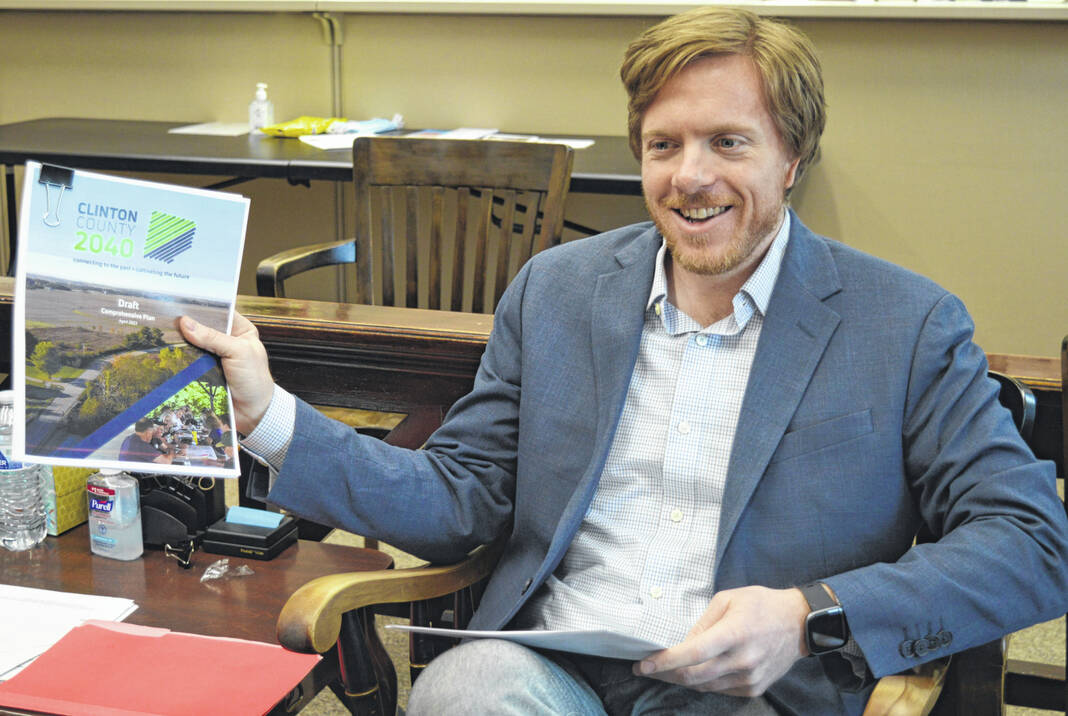

WILMINGTON — People who live outside Clinton County but come here to work have, on average, higher wages than do the Clinton County residents whose jobs take them out of the county.
This can be taken to mean that the county has an opportunity to attract new residents if the right conditions are met, believes Clinton County Regional Planning Commission Executive Director Taylor Stuckert.
The data on the average wages of incoming commuters and outgoing commuters are contained in the recently completed “Clinton County 2040” comprehensive plan. While “Clinton County 2040” looks toward the county’s future and is designed to be a long-term guide, it also includes stats reflecting current conditions and trends.
Clinton County has higher-wage jobs relative to the surrounding region, according to the written text of the 129-page comprehensive plan document. The commuting data indicate that a significant portion of people employed here do not reside here — some 10,033 people.
Why are there 10,000+ people who work here in Clinton County but live elsewhere?
“This could be because of concerns about school quality, community amenities or housing, as well as dual professional careers within households requiring proximity to locations with more career options,” offers the text by planners.
A graphic in the document shows the prevalence of commuting. According to it, there are 10,605 people who live in Clinton County but work outside the county; then there are those 10,033 people who work in Clinton County but live elsewhere; and then finally there are about 5,948 people who both live and work in the county.
Accordingly, the planners recommend that the county look to amenities (recreation, restaurants, entertainment, retail, and so forth), quality schools, broadband connectivity, and housing options as things that can sway incoming commuters to live in Clinton County, “enabling the retention of more wealth” here.
Moreover, the plan urges that: “More effort should be made to understand why people are travelling so far, and ideas should be explored to attract more people who will both live and work in the county.”
The incoming and outgoing commuting patterns have important economic consequences for the county, according to the comprehensive plan.
“First, a lot of purchasing power is leaving, which impacts the amount and quality of services available, including retail and restaurants,” the planners state.
“Second, highly skilled occupations in the county are subject to competition for talent from jobs closer to these worker [out-of-county] residences. That means these jobs in Clinton County, which overlap with metro opportunities, are always under talent pressure,” the text adds.
“On the flip side, it means that Clinton County is an important source of affordable workforce housing for the surrounding region, and increased investments in such housing will continue to build upon opportunities for regional workforce to live in the county,” said the plan document.
The plan also includes data on a segment of people who do both live and work in Clinton County — farmers.
Farms in the county are on average 106 acres larger than the state average. The average farm size in Clinton County is 285 acres, whereas the average farm size statewide is 179 acres, according to the U.S. Census of Agriculture, cited in the plan.
The market value of farmland, buildings and equipment per Clinton County farm is nearly $1.7 million, compared to $1.1 million throughout Ohio.
“With Ohio’s farming population aging and nearing retirement, pressure will increase for farms to consolidate or sell off for development. If the county seeks to support existing farms, a combination of actions will be needed as a collaboration between partners in the county,” the planners advise.
The two industries locally with the most employees, and which make up 46 percent of all jobs in the county, are the transportation-and-warehousing sector, and the area of manufacturing.
Reach Gary Huffenberger at 937-556-5768.



